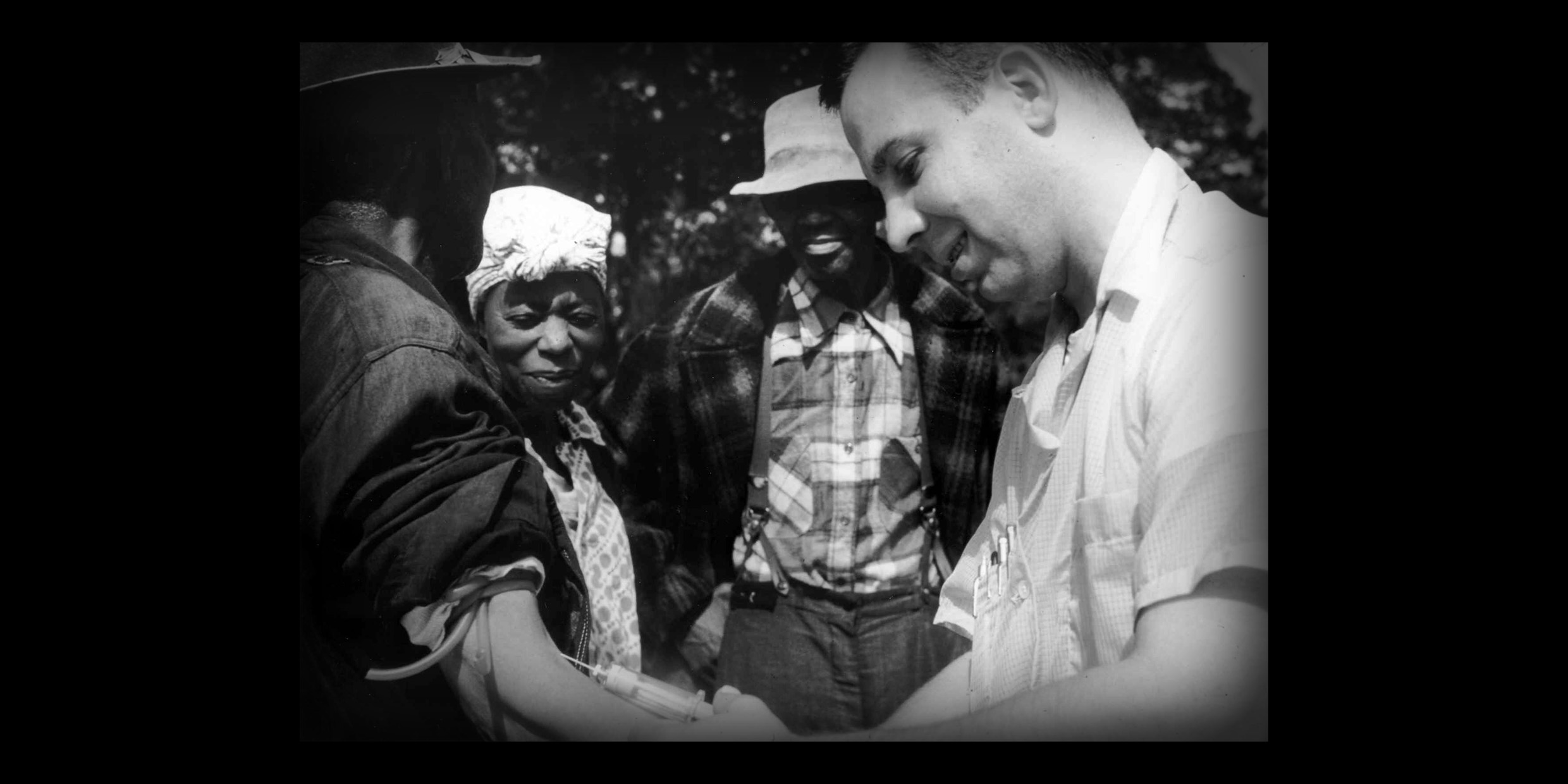Originally published 22 October 1990
The story broke on July 26, 1972. Jean Heller of the Associated Press blew the whistle on what may be the most despicable episode of racism in the history of American science.
For 40 years the U.S. Public Health Service had been conducting a study of the effects of untreated syphilis on a group of 400 Black men from in and around Tuskegee, Alabama. The men were mostly poor and illiterate. All of them were in late stages of the disease when they entered the program.
In spite of its high-sounding name, the Tuskegee Study of Untreated Syphilis in the Negro Male was no more than a publicly-funded death watch masquerading as science. Subjects were enticed to participate with the promise of free medical examinations, free rides to the clinic, hot meals on examination days, and a $50 burial stipend to be paid to their survivors. Apparently, they were not told the true nature of their illness. One subject remembered being told only that he had “bad blood.”
The men received no treatment for syphilis. No new drugs were tested. Scientific controls on the experiment were lax. Nothing learned in the study would prevent, find, or cure a single case of the disease.
Despicable treatment
When the program began in 1932, public health officials could feebly argue that the available treatments for syphilis were nearly as dangerous as the disease. More reprehensibly, the study was allowed to continue after the introduction of penicillin in the 1940s. Participating doctors were asked not to prescribe antibiotics, although the drugs might have been useful treatments for afflictions other than syphilis. Men died as a direct result of complications caused by syphilis. Wives contracted the disease from untreated husbands. Children were born with congenital syphilis.
Following Heller’s revelations, outrage from within and without the scientific community brought the program to a halt and caused the U.S. Government to pay a $10 million settlement to survivors and heirs. Distressingly, the public health officials who set up and administered the Tuskegee Study denied a racial bias to the very moment when the monstrous project came crashing down about their heads. The Atlanta Constitution wrote of “a moral astigmatism that saw these Black sufferers simply as ‘subjects’ in a study, not as human beings.”
The story of the syphilis experiment broke on the day during the 1972 presidential campaign when it was announced that George McGovern’s running-mate, Senator Thomas Eagleton of Missouri, had received shock therapy for depression. The syphilis story was bumped to the bottom of the page, and soon dropped out of sight.
Like many Americans, I missed the story in 1972. I became aware of the syphilis experiment nine years later when I read a review in the New York Times of James H. Jones’ Bad Blood: The Tuskegee Syphilis Experiment, a scholarly, unemotional account of what happened between 1932 and 1972.
I have never read a more profoundly distressing account of racism in American science.
To best way to insure that something like the syphilis experiment won’t happen again is for Black Americans (and other minorities and women) to be fully integrated into the scientific community. A [1990] exhibit at the Boston Museum of Science called “Black Achievers in Science” has this as its goal.
The exhibit features the careers of 16 prominent Black scientists, offering them as role models for kids today. Hands-on displays introduce the museum-goer to a central aspect of each scientist’s work. Other interactive displays give practical advice on how to follow in the achievers’ footsteps.
First among the exhibit’s 16 Black achievers is Ernest Everett Just, a biologist who made fundamental advances in the role of the cell wall in the development of organisms. Inspired by his mother, Just left his South Carolina home to seek schooling in the north. He graduated from Dartmouth College, and received his Ph.D. from the University of Chicago. He did much of his work at the Marine Biological Laboratory at Woods Hole on Cape Cod.
Denied chance to work
It was Just’s tragedy that he received enough White support to achieve the highest level of education in biology, and was then denied the opportunity to practice his profession at a level commensurate with his abilities. At about the time the Tuskegee syphilis experiment was getting under way, America’s foremost Black biologist abandoned America for Europe in his search for greater personal freedom and professional support.
Just’s story is typical, and it was the absence of his generation of Black scientists in positions of influence within the scientific community that made the Tuskegee syphilis experiment possible.
Perhaps it is wrong to look backwards, to an earlier incident of blatant racism, as an introduction to the Museum of Science’s “Black Achievers” exhibit. Certainly the exhibit itself looks only forward, to the full participation of Blacks in science and American life. The central motif of the exhibit is the directed path, from curiosity, to dream, to education, to achievement.
But we shouldn’t forget the past, particularly those parts of it that show us at our best — and worst.



